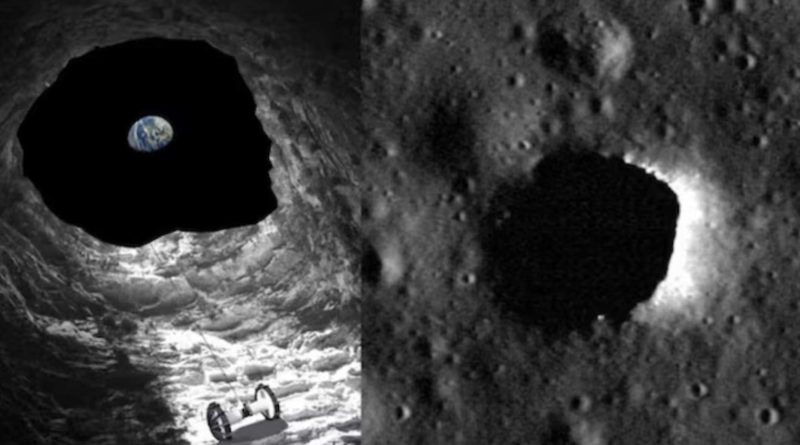Stunning Discovery: Vast Cave Found Beneath Moon’s Surface
Researchers have recently discovered a vast underground cave system on the moon, which could serve as a future lunar base for astronauts. This remarkable find, located approximately 150 meters beneath the lunar surface in the Mare Tranquillitatis pit—where Neil Armstrong and Buzz Aldrin first landed—was identified using data from NASA’s Lunar Reconnaissance Orbiter (LRO).
Radar readings indicate that the Mare Tranquillitatis pit is the deepest known lunar pit, extending about 45 meters in depth and 100 meters in width. This confirmation came through LRO data and computer simulations.
Lorenzo Bruzzone of the University of Trento in Italy suggests that the cave is likely an empty lava tube. Given the moon’s low temperatures, this pit could provide excellent shelter for astronauts on future missions.
Exploring the cave’s rock formations could offer insights into the moon’s geological history and activity. There is also speculation that water ice may be present in the cave, which would be invaluable for long-term lunar missions and potential colonization efforts.
Over a decade ago, lunar orbiters detected these pits on the moon’s surface, aided by skylights that revealed entrances to underground caves, such as lava tubes. The formation of these subterranean tunnels is attributed to the moon’s volcanic past. To date, around 200 pits have been identified, many on lava fields, potentially leading to more of these hidden lava tubes.
In summary, this discovery of an underground cave on the moon presents a promising opportunity for establishing a lunar base, significantly advancing future space exploration efforts, including missions to Mars and beyond.
Mysterious Cave Found on Moon by NASA’s Lunar Reconnaissance Orbiter
Scientists have unveiled an intriguing cave conduit beneath the Moon’s surface, potentially ideal for future human settlement.
Discovery of the Lunar Cave
An accessible cave conduit has been identified beneath the Moon’s surface, deemed suitable for human habitation. This cave is situated 250 miles from Apollo 11’s historic landing site in the Mare Tranquillitatis region.
Radar Analysis
Researchers employed radar data from NASA’s Lunar Reconnaissance Orbiter, drawing comparisons with Earth’s lava tubes. These findings were published in the journal Nature Astronomy.
Potential for a Lunar Base
The cave is a promising candidate for a lunar base, offering protection from the Moon’s harsh environment and supporting extended human exploration.
Access Point
Access to the cave is through the deepest known pit on the Moon, created by the collapse of a lava tube. This pit is among over 200 similar structures identified on the lunar surface.
Protective Environment
Such caves offer natural shielding from harmful cosmic rays, solar radiation, and micrometeorites, making them ideal for emergency shelters on the Moon.
Historical Context
Lunar orbiters detected pits on the Moon over a decade ago, many of which are thought to be “skylights” leading to subterranean caves like lava tubes, formed by volcanic activity.
International Interest
NASA aims to establish a semi-permanent crewed base on the Moon, with China and Russia also showing interest in creating lunar research outposts.
Stable Environment
A permanent lunar base requires protection from cosmic radiation and stable temperatures, conditions that these caves can provide.
Future Exploration
The discovery of this lunar cave is a significant milestone towards a sustained human presence on the Moon, opening the door for further exploration and habitation. This identified cave offers a viable option for future human settlement, providing a naturally protected environment crucial for establishing a sustainable lunar base.

